Information from RECYCLING TIMES MEDIA CORPORATION14.06.2019
Western European HCP Market Declines
According to research by International Data
Corporation (IDC), the Western European printer and multifunction (MFP) market
decreased by 5.8% in unit terms in 1Q19 compared with the same period a year
ago. This meant the overall market declined by 286 thousand units and price
pressures led value to also decline by 4.1% to just over .5 billion. There
were few areas of growth and the negative start to the year will continue
throughout 2019.
Inkjet shipments declined 5.4% to just over 3 million
units and both A4 and A3 shipments recorded negative growth figures. Most
declines were from printer devices, but MFP shipments also decreased more than
4%, but not all OEMs saw declines.
Laser shipments declined by 6.1% and as with inkjets
there were few areas of growth. Some markets, such as A4 single-function
printers, declined quite heavily, but there was small growth from A3 single
function printers and A4 monochrome MFP devices. As fewer overall laser units
shipped the value also declined, this time by 2.5%, even though some of the
higher speed segments increased.
High speed inkjet devices also contracted in terms of
units, but the value was up, and the serial impact dot matrix market continued
its decline.
“The decline shown in 1Q19 was in line with
expectations and the markets and this negativity is likely to be reflected
throughout 2019, but there will be some growth from some segments,” said Phil
Sargeant, program director in IDC’s Western European Imaging, Hardware Devices,
and Document Solutions group. “The hardcopy markets are still very valuable to
many OEMs and some traditional markets such as monochrome and inkjet are still
very sizeable even if they are declining.”
Highlights:
· The
overall Western European hardcopy market contracted by 5.8% year on year in
1Q19, recording a shipment figure of 4.6 million units, while the value
declined by 4.1%.
· A4
monochrome MFP showed a small increase of 0.8%, while A4 monochrome printers
declined by 11.2%.
· In
line with expectations, the A3 monochrome markets declined by double-digit
figures.
· Most
color laser segments saw surprise declines but there was solid growth from the
niche A2 printer market.
More information please visit: www.idc.com
Details:https://www.rtmworld.com/news/western-european-hcp-marke-continue-to-contract/

14.06.2019
Worldwide HCP Market Declines
According to IDC report, Worldwide shipments of hardcopy peripherals
(HCP) decreased 3.9% year over year to 22.8 million units in the first quarter
of 2019 (1Q19).
The brightest spot for the quarter was the
year-over-year expansion of color inkjet multifunction printers (MFPs) in the
11-20 ppm range, which grew 4.7% to more than 6.2 million units shipped.
Notable highlights from the first quarter include:
· Ink
Tank devices continued their positive momentum recording a 23.4% year-over-year
gain in unit shipments in 1Q19. Asia/Pacific (excluding Japan) and Latin America were the top two regions for ink tank shipments with 1.7 and 1.0 million units
shipped in the quarter, respectively.
· Inkjet
shipments decreased 2.1% year over year to nearly 13.7 million units shipped.
Asia/Pacific (excluding Japan)
was the top region for inkjet shipments, growing 8.8% year over year to more
than 3.5 million units in 1Q19. Western Europe, the second largest market,
contracted 5.4% while the United
States, the third largest market, declined
4.8% year over year.
· A3
color laser MFPs continued on a positive trajectory with a year-over-year gain
of 1.0% to nearly 600,000 units shipped.
· HP
Inc. declined 3.5% year over year with global shipments dropping to less
than 9.4 million units. However, two of HP’s top 3 regions, Western Europe and
the U.S.,
exhibited year-over-year gains of 2.8% and 2.6%, respectively.
· Epson regained
the top inkjet position from Canon in Asia/Pacific (excluding Japan) albeit
at a marginal share advantage of 0.7%. Epson grew by about 210,000 units year
over year due to the improved sales of its new generation of more compact ink
tank printers, which were largely responsible for the growth of the ASEAN
market and the biggest winner in China as the only one with a market
share gain this quarter.
Details: https://www.rtmworld.com/news/worldwide-hcp-market-declines/
|
Worldwide Hardcopy Peripherals Market, Unit
Shipments, Company Share, and Year-Over-Year Growth, Q1 2018 (based on unit
shipments) |
|
Companies |
1Q19 Unit Shipments |
1Q19 Market Share |
1Q18 Unit Shipments |
1Q18 Market Share |
1Q19/1Q18 Growth |
|
1. HP Inc. |
9,369,660 |
41% |
9,704,972 |
41% |
-3.5% |
|
2. Canon
Group |
4,349,818 |
19% |
4,393,457 |
18% |
-1.0% |
|
3. Epson |
4,317,575 |
19% |
4,443,484 |
19% |
-2.8% |
|
4. Brother |
1,670,633 |
7% |
1,783,246 |
8% |
-6.3% |
|
5. Kyocera
Group |
533,153 |
2% |
547,539 |
2% |
-2.6% |
|
Others |
2,596,669 |
11% |
2,896,050 |
12% |
-10.3% |
|
Total |
22,837,508 |
100% |
23,768,748 |
100% |
-3.9% |
|
Source: IDC Worldwide Quarterly Hardcopy
Peripherals Tracker, May 2019 |
14.06.2019
New Compact Printers from Epson
Epson America has expanded the WorkForce®
and Expression® line of printing solutions, including one WorkForce home office
model and two Expression printers designed for today’s busy families. Epson’s
latest affordable, compact printers – the WorkForce WF-2830 All-in-One Printer
and Expression Home XP-4100 and Expression Premium XP-6100 Small-in-One®
Printers.
The new WorkForce and
Expression models are compatible with Alexa, Siri and Google Assistant for easy
hands-free voice-activated printing on command1. The models also support
driverless printing from Chromebooks; users can print right from their desktop
without installing or maintaining printer drivers for the WF-2830, XP-4100 and
XP-6100.
Packed with convenient
features, fast print speeds and easy wireless connectivity for printing from
tablets and smartphones2, Epson’s new All-in-One and Small-in-One printers
offer an affordable solution to enhance the at-home printing experience.
Home Office Solution: An efficient,
reliable printer, the WorkForce WF-2830 offers fast print speeds plus wireless
connectivity to deliver professional-quality documents, reports and proposals.
This compact all-in-one features a convenient 30-page Auto Document Feeder,
auto 2-sided printing, and print speeds of 10.3 ISO ppm (black) and 4.5 ISO ppm
(color) to enhance productivity. The WF-2830 leverages affordable individual
ink cartridges, including pigment Black Claria® ink for crisp black text in
professional documents.
Efficient Everyday
Printing: A compact, convenient printer, the Expression Home XP-4100 provides
quality prints for on-the-go college students and families. Printing, copying
and scanning is right at the user’s fingertips with the 2.4” color LCD. This
sleek printer features instant-dry ink for truly touchable photos and
documents, and increases productivity with a 100-sheet-capacity paper tray plus
auto 2-sided printing. Compatible with the Epson Creative Print App, students
and families can easily create custom projects such as photo collages, greeting
cards, stationery and more, right from their iOS or Android devices.
Impressive Photo Quality:
A versatile, fast printer, the Expression Premium XP-6100 delivers superior
photo and document quality for today’s fast-moving families. With affordable,
individual 5-color Claria Premium Inks, the XP-6100 outputs stunning borderless
photos up to 8” x 10”, plus sharp text. Whether running a creative household or
starting your own company, the XP-6100 touts an array of convenient features
such as print speeds up to 15.8 ISO ppm (black) and 11.3 ISO ppm (color) †, 4”
x 6” photos in as fast as 15 seconds3 and auto 2-sided printing. Built-in USB
and memory card slots4, an improved 2.4” color LCD and dedicated photo and
CD/DVD trays offer additional convenience.
Details:https://www.rtmworld.com/news/new-compact-printers-from-epson/
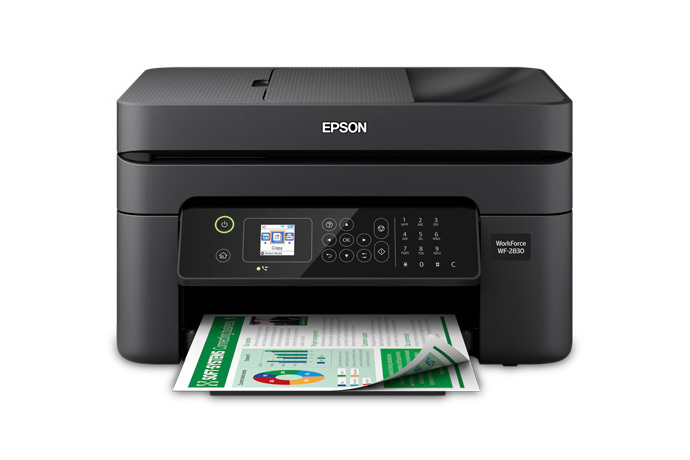
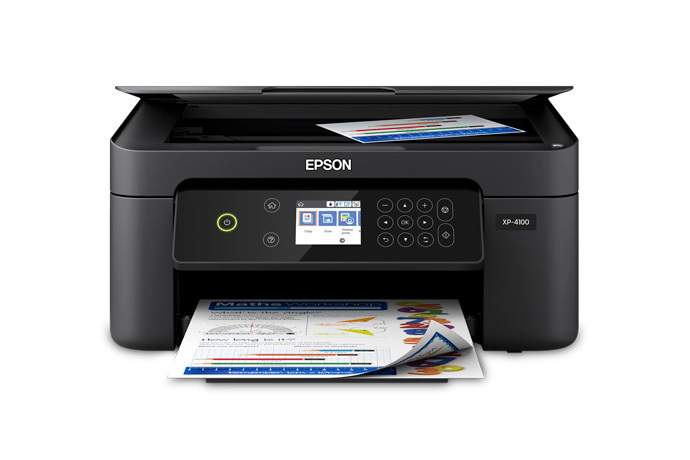
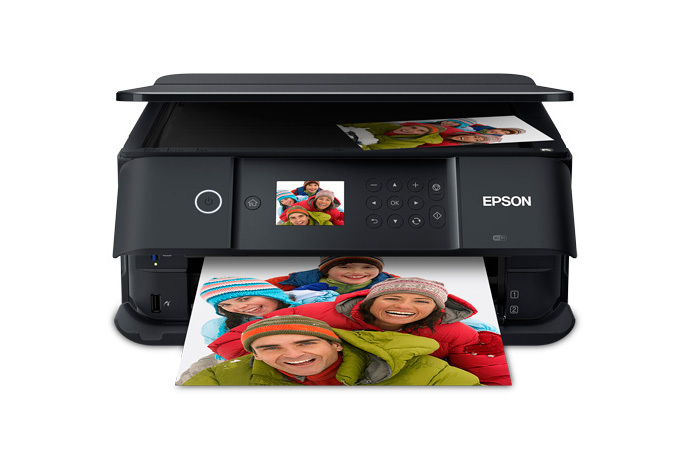
14.06.2019
World’s First Smart Tank Laser
Printer
HP
has announced the launched of new toner tank printer series Laser NS 1020 and
Laser NS MFP 1005. The company claimed the HP Neverstop Laser is designed for
small business owners in emerging markets and a reimagined HP Smart Tank for
home.
Key features include:
· Up to 5,000 pages without
interruptions
· Print up to 5,000 pages right out of the box with virtually no interruptions-perfect
for high-volume printing
· Reload mess-free toner in seconds
· A revolutionary supply system lets you quickly and easily reload toner
levels in 15-seconds without making a mess
· Original HP quality and unbelievable savings
· Get original HP quality printing for a cost per page competitive with
imitation cartridges, with up to 80 percent cost savings on HP original toner
· Connected and mobile
· Easy mobile scanning and printing with best-in-class mobile print app,
HP Smart App
HP
Neverstop Laser will first launch in China;India and selected countries
in SEA, summer 2019; Russia and selected countries in CEMA, July 2019; LAR, August 2019.
The
new HP Smart Tank will first launch in June in all emerging market countries in
Asia Pacific except India,
which will ship in July. Also shipping in July are the APJ developed markets,
EMEA emerging markets, and LAR countries.
Smart
Tank is now available on HP’s Chinaonline shop. The prices are:
Laser
NS 1020: RMB¥1599
Laser
NS 1020w: RMB¥1649
Laser
NS MFP 1005: RMB¥1899
Laser
NS MFP 1005w: RMB¥1949
The
refilled toner set is RMB¥199, with two toner tanks of estimated yield of 5,000
pages.
Details:https://www.rtmworld.com/news/worlds-first-smart-tank-laser-printer/
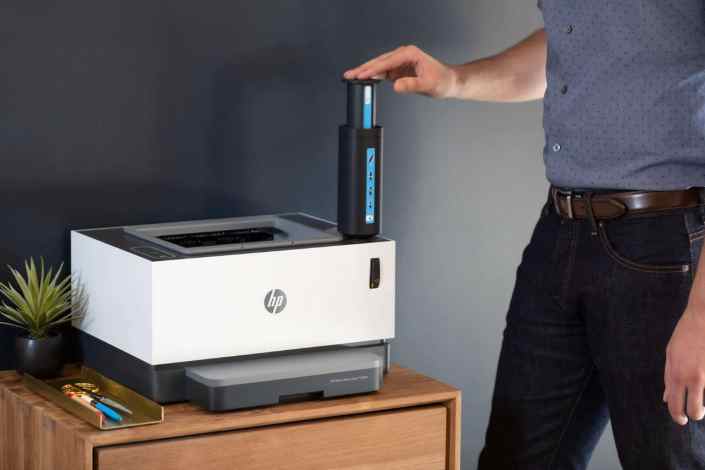
14.06.2019
Examining the Quality
of Toners
There have been recent
reports about the bad quality and health consequences of Chinese produced
toner. Where does bad quality come from?
Just as with any product
from any country, the quality of toner depends on the manufacturer of that
product and the decisions that are made by the formulator, and the purchasing
and manufacturing departments. The composition of any powder toner consists of
pigment, polymer, wax, charge control agent, bulk additives and surface
additives.
In general, lower-cost
raw materials, wherever they are sourced, are likely to contain “impurities”
that could possibly be undesirable from a health and safety perspective. A
variety of such trace materials have been identified as potential health
hazards in toner. One category of the materials of concern includes
Volatile Organic Compounds (VOC) – including Styrene, Benzene, ethylene glycol,
formaldehyde, methylene chloride, tetrachloroethylene, toluene, xylene, and
1,3-butadiene.
Such materials, if
present in toner, can be released into working the environment during the
fusing/fixing stage of the print process. As the toner that is transferred from
the photoconductor to the paper or other substrate is heated reaching 130 to
180°C any VOC content of the toner is volatilized and exhausted from the print
engine by the machine cooling system through the fan and duct to the space in
which it is being operated.
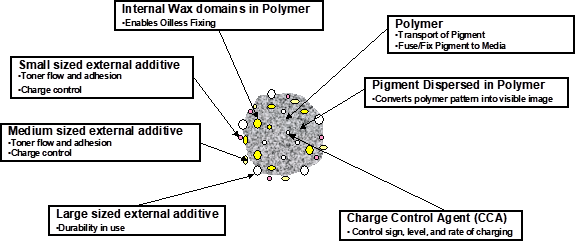
Other sources of
environmental pollutants from toner are toner dust and loose toner surface
additives. All toners comprise finely divided particles that have a mean
particle size of anywhere from five to ten microns. This mean is only the
middle point of the toner particle size range, and toner can contain particles
of size well below five microns and well above ten microns
The removal of particles
from any source of dust that penetrates into the gas exchange region of the
lungs depends on a variety of factors but significantly depends on the diameter
of the particle. Hazardous particulate size is primarily less than five
microns, and particle sizes of 2.5 microns (PM2.5) are often used in the U.S. to
describe non-respirable dust. The particle size distribution (PSD) – the range
and percentage content of toner particles by the size of any toner – depends on
the toner composition and the toner production conditions. With respect to
toner dust less careful, and typically lower-cost manufacturing can be responsible
for toners that “dust”. Such toners might have a mean particle size that
matches that required for operation in a particular engine. but have a psd that
is too broad or has a high fractional content of ultra-small-sized toner
particles.
In addition, the surface
additives that are used to promote toner powder flow, durability and charging
need to be processed in the production of the toner such that they are
sufficiently well attached to the toner particle surface to prevent their
release from the surface of the toner particles during the entire printing
process.
This process is highly
agitating: starting with the agitative processes in the print engine of
delivery from the toner reservoir, application to the developer roller,
transfer to the paper or substrate and on to the downstream processes of
printing. The typical surface additives used in toner are ultra-small in size
compared to the toner, with sizes ranging from eight to 250 nanometers, well
below the PM2.5 particle size considered to be dangerous from a respirability
perspective. Typical materials used include silicon dioxide, aluminium oxide
and titanium dioxide.
In addition to the dust respirability factor,
there has been recent attention to the question about the foregoing gives some
idea of the range of issues regarding the development and manufacturing of
toner, and these matters concern all toner manufacturers worldwide. That the
manufacturing of toner, particularly for the aftermarket, has shifted
geographically from Europe and North America to Asia brings the focus to that region. Production in China is, of course, an important
development of this trend. The other aspect of this shift is that there has
been the development of raw material supply in Asiain support. Sources of locally manufactured toner ingredients have been
established and developed. Some of those companies are new to the toner
manufacturing industry and have been on a “learning curve” regarding the
requirements for materials for toner
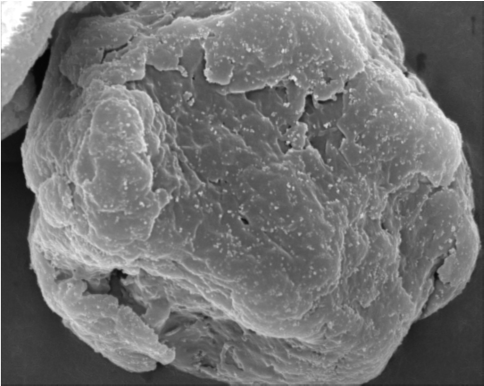
the effect on the health
of ingestion of titanium dioxide. The scanning electron microscope (SEM)
picture below shows surface additives as very small white dots on the toner
particle.
With this geographical
shift, new manufacturing capacity, as well as transferred production capacity,
has been established. Simultaneously, there has been a constraint on production
caused by softening of demand, particularly for types of toner most popular in
the aftermarket. This imbalance in the “push-pull” between the available
capacity and market demand has generated severe price competition and depressed
profitability in the toner manufacturing industry, particularly in the more
recently developed toner manufacturing in Asia.
The natural response by
toner manufacturers in attempts to mitigate this is to economize and attempt to
reduce unit cost by reducing raw material and manufacturing costs. For some
manufacturers, this means that they are using lower quality polymer, pigment,
magnetite, wax, and other ingredients and increasing production throughput
rates with consequential degradation of PSD and integrity of the toner and its
additives.
In general, but not
universally, lower cost raw materials, and the use of raw materials, that are
not designed for toner use, results in issues of high VOC content and content
of undesirable trace materials. The changes made in raw material compounding
conditions to increase throughput rate resulting in higher heat and energy
input can cause degradation of raw materials and the creation of VOC fractions.
Higher production
throughput rates in fine grinding to reduce energy cost content per kilo and
changes to classification to maximize product yield, both strategies to reduce
product cost potentially increase the likelihood of “dusting” of toner in use.
There is no such thing as
“Chinese Toner” as a homogenous set of products. As has always been the case in
the toner industry, irrespective of the location of manufacture, there are
within toner manufacturers professionally oriented, responsible manufacturers,
which develop and manufacture their products responsibly with the objective of
maintaining standards of performance and minimization of any environmental or
health impact.
There are also those companies
that do not follow the same policies. It is important in any purchasing
decision, whether as a reseller or user, that the full cost of purchase rather
than the price is considered, as poor quality can significantly impact the
cost. The efficacy of Chinese toners just like toner from any other
geographical regions vary. Not all are bad or good. Buyers should be
conscientious in their evaluation of products before they purchase.
Details:https://www.rtmworld.com/features/examining-the-quality-of-toners/
14.06.2019
Dealing
with China:
two leaders respond
Vincent Chen says building trust is the key—he is president of the HK HaoYinBao Group, known better as HYB
Toner
Do you see China taking on a more or less of a
significant role in the imaging supplies industry in the future? Why?
Yes. The
Chinese products and their manufacturers are definitely getting more and more
important to the imaging supplies aftermarket. There are many different
reasons, but in my opinion, some Chinese manufacturers have improved their
engineering development and strength. At the same time, of course, we also
notice that those who fail to deliver quality products are fading away.
What questions are you asked the most from
foreign companies wanting to deal with you as a Chinese company?
Most of our
customers don’t treat us any differently from other international suppliers.
It’s true that some have had bad experiences with some Chinese suppliers and
became more cautious. From the questions we are asked I can tell you that the
worst experience they suffer from is the stability of the products.
What advice would you give to an
international company wanting to deal with any Chinese company?
There are
always good and bad business people in every nationality and our customers have
suffered serious problems with their suppliers in other countries too. So, we
shouldn’t “label” companies simply by their nationality. As long as the
manufacturers or suppliers are working with a principle that is in line with
your standards, then you can get a deeper approach to understand these
companies, business styles and how they manage their quality control.
Gradually, you can decide if these companies are trustworthy or not.
How important is it for foreigners,
wanting to do business with China,
to actually visit China?
From the
outset, all buyers should have done some research and had a conversation with
the experienced representative of the suppliers. In my experience, our smartest
customers have their own “FAQs” which help them to identify if a supplier is
worthy or not. E-commerce, however, has seen many businessmen become lazier in
communicating with their suppliers. They are doing less due diligence to
discover if suppliers are suitable or not. I think this is the reason why
problems are occurring more. It’s like the marriage between a boy and a girl
who only know each other for a week. You can imagine how risky the marriage
will be.
Providing consistent quality and non-infringing
products are important for your company, yet not all Chinese companies hold the
same values. Why?
Many company
owners didn’t realise the industry potential when they started out in business.
They only wanted a piece of market share and were surprised at how quickly this
industry developed.
While our
initial purpose at HYB was not to build a company that would sit on top of the
industry pyramid, I found our people are not the kind that likes to lose the
trust of our customers. The relationships we have with our customers are
mutually beneficial with many customers helping us to further develop our
products. With such a huge responsibility, you always try to find every means
possible to invest in and improve your quality systems to ensure the consistency
of your products. Customers are very demanding in their expectations for
“trouble free” products. This thinking is reasonable so we will never stop the
development of patents and systems to meet the needs of our customers.
Ding Li
invites you on a field trip—he is Chief Technology Officer (CTO)
at Apex Microelectronics Co.,Ltd
Do you see China taking on a more or less of a
significant role in the imaging supplies industry in the future? Why?
China must take on a more significant role in the imaging supplies industry in the
future. Its huge population and booming economy have caused China to have a
more a significant role on the world stage. In keeping with this trend, both
for homes as well as business there is a growing demand for the imaging
industry too. Chinese enterprise has the advantage of resources and commerce
from its huge domestic market. This is all true for Apex which has developed,
mass produced and released controller chips for multifunctional laser printers
in 2018. Another kind of controller chip is in its validation phase. We expect
to continue being more active in meeting both domestic and international
demands required by the imaging industry.
What questions are you asked the most from
foreign companies wanting to deal with you as a Chinese company?
The speed of releasing new products, patents, and product quality is the
biggest issue among our customers. In response, I would like to say Apex has
accumulated a significant 18 years of deep understanding about chip technology.
Our highly-educated, experienced chip design engineers are able to accelerate
the speed to release the new products. At the same time, our well-qualified and
experienced IP engineers focus upon patent analysis, risk avoidance, and
patented product design. We verify the chips in our Provincial Printer SoC Chips Engineering Center and Provincial Research Center using
newly equipped test and analysis devices, valued at .5 million in 2018. By
providing a strong quality system we can address any concerns customers might
have.
What advice would you give to an
international company wanting to deal with any Chinese company?
Have a field
trip. I welcome any foreign friend to visit and explore the full process of chips
development and the breakthroughs we made in technology innovation. Visitors
tell us their on-site visits to Apex opens their eyes to the level of
commitment in terms of research, development, manufacturing and quality
control. I believe such a real, face-to-face communication will make us strong
partners.
How important is it for foreigners,
wanting to do business with China,
to actually visit China?
There is an
old Chinese saying, “To see one time is better than to hear a hundred times”.
For foreigners who want to do business with China, it is not enough to simply
contact a company online. There is only one way to experience Chinese culture
and advances in technology. You must visit and travel on China’s high-speed
trains, climb the Great Wall and visit Apex’s experimental and testing centers,
and automated production lines. I urge visitors to use Apex’s 3D X-ray analysis
equipment to take a stereogram of chips… I believe the impression formed by
foreign friends will have a deep impact upon them and they will be encouraged
to do business with Chinese companies.
Providing consistent quality and
non-infringing products are important for your company, yet not all Chinese
companies hold the same values. Why?
Most Chinese
companies hold such values about providing consistent quality and
non-infringing products. Having values is easy, however, but it is hard to
realize. We have gained our current market position because we have focused on
intellectual property rights and technical competence. This includes encryption
analysis, chip design, product testing and patent analysis technologies. This
is why Apex can design non-infringing patented products with high quality and
firmware resistance. Those Chinese companies that cannot realize the above
values are limited in technology or patent knowledge. As an industry leader,
Apex is willing to work with more Chinese companies to achieve common
development and to provide clients with design consistent quality and
non-infringing products.
Details: https://www.rtmworld.com/features/dealing-with-china-two-leaders-respond/
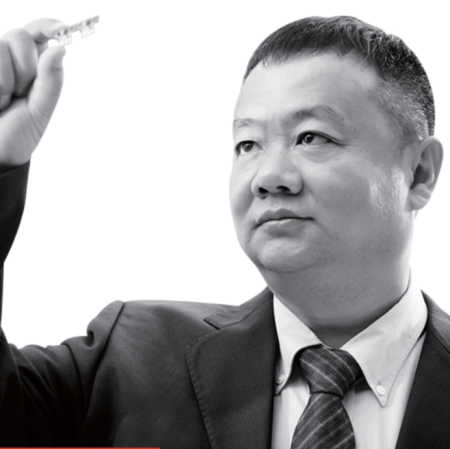
14.06.2019
China’s Long
History of Innovation Leadership
China only joined the World Intellectual Property Organization (WIPO) in 1985. Some,
when learning of this, are surprised and that’s because in the West can trace
back the origins of patents at least 2,500 years ago to the City of Sybaris,
originally part of Ancient Greece and now part of southern Italy.
The elders of
the city granted protection rights to anyone who “invented” something of a
luxury. Usually recipes for meals or refreshments. The inventor would get
exclusivity for a year and therefore have a short-term monopoly to exploit, but
the inventor had to lay open the exact process, ingredients and steps for all to
see.
The
question is why did it take Chinaso long to join the WIPO? Was it that they were not inventors or was it more to
do with the open culture and the way in which totalitarian rule decided how the
civilization should be controlled?
Throughout
history, the Chinese have been recognized as prolific inventors: gun powder,
the compass, paper, print and so on. So, this is not the reason. The fact is
that the through the ages the ruling dynasties didn’t believe that useful
inventions should be monopolized for the financial benefit of a few when the
masses could benefit from the new modern technology.
Cai Lun is
said to have invented paper in China more about 1,914 years ago. He decided to use plant fibers in his process
resulting in a thinner, whiter parchment that when dried and cut created a
perfect substrate for painting, printing, drawing, writing, flying (kites) and
a host of other uses. He took his invention to the emperor, who decreed that
every village should be taught how to make it so that the greater population
could benefit. No patent, no exclusive period for exploitation, just a decision
to allow the people to benefit. Lai received perhaps the greatest reward of all
in being known as the inventor of paper for eternity.
As with most
inventions, there is no such thing as an original thought. Someone somewhere
has had the same thought, taken past technologies and inventions and made them
better, faster or cheaper. Lai was certainly aware of papyrus parchment used by
the Egyptians 2,000 years before. He improved it, used what was local and made
history. Today a sheet of paper goes a long way, has thousands of uses and
costs about half a cent. You will find it in every corner of the world and it
goes down as one of man’s most successful inventions. A bit like the wheel or
fire.
Had paper
been invented in modern times in the West, no doubt it would have been patented
and exploited and far less successful. It is not a stretch to envision a
paperless world many decades ago since the need to have a substrate to draw or
write, upon is universal. Paper’s success as an intrinsic part of global life
for almost 2,000 years prevents the newer patented technologies which are
already here, from creating the paperless world. The entry cost is simply too
high compared with half a cent, and of course, you need a source of power. No
batteries needed to read a sheet of paper. By the way, did I mention you can
use both sides, recycle it, screw it up and throw it in the wastepaper basket
only to be able to retrieve it, flatten it out, and use it again? What an
invention! We won’t see a paperless society any time soon.
China was a late starter to patents. The U.S. led the world in patent
filings, double that of European countries for many, many decades. Now the
table has turned. The Chinese file more patents than any other country. Three
times as many as the U.S. who are now in second place. Now China wants to protect its own
technologies as it morphs from a replicator of products invented elsewhere to a
technology-driven economy leading the world into the future. The sleeping giant
has awakened. In 1979, Deng Xiaoping declared an open policy for China. “To be
rich is beautiful,” he declared. The West was quick to exploit the cheap labor
and moved production from Taiwanand Hong Kong to lower-labor-cost Chinese
factories. Chinese government-supported, state-owned enterprises, giving land
and money for building factories filled with German-made machines.
Thousands
upon thousands of companies began producing whatever the Western consumer
needed. A typical worker would work six days a week at ten-hour shifts, sleep
in dormitories holding up to 16 people to a room for about 0 a month in pay.
Today it is a little different. Dorms give way to high-rise apartment blocks
for workers, salaries have quintupled, the pedal bikes have given way to motor
cars to a point where there are so many cars, it is quicker to use a pedal
bike. Infrastructure investments over the years have built good highways, fast
“bullet” trains up and down the country, the world’s longest bridge from Hong
Kong to mainland China,
and space landings on the dark side of the moon. The small towns have become
new cities, the skyscrapers fill the horizon and the pace of change is
phenomenal. What’s next?
China achieved in a decade what it took the British 150 years to accomplish in the
industrial revolution in order to bring people out of abject poverty. It hasn’t
happened by chance. Every step has been carefully planned and thought through. China has a
50-year plan, it has patience, it is determined and it sits on three trillion
in U.S. dollars. It has invested much back into the US, prompting Warren Buffet to say,
“Whether we like it or not, we all work for the Chinese.” The Chinese consumer
market is now growing fast, they have plenty of money and there is nothing they
won’t buy. They now have more millionaires than the U.S.and Prada, Channel, Dior, Louis Vuitton, Rolls Royce and Bentley are all
selling more in China than any other marketplace. Chinese workers now get more paid time off than a
typical US worker. GDP value in Chinais now nearly 20 percent of the world economy, and sets China on a course to be world’s biggest economy
soon, taking the top spot from the U.S. When this happens, it will
signal the first time that a “developing country” nudges a leading “developed
country” to the sidelines. China will want its say on the world stage, the West will not be happy about it. The
world is being all shook up, as Elvis used to sing.
I
figured out a long time ago that you can’t compete with China, so run
toward it and see what it can do for you.
The Chinese
ideology of building “cluster” cities to dominate world markets in one
government supported area is something not replicated in the West, but it has
huge benefits and impact. Sock City, located in Datang, Zhejiang Province, dominates the world sock markets producing 19 billion pairs a year,
Shenzhen dominates the world electronics’ markets and Zhuhai dominates the
world’s cartridge consumable markets with more than 600 companies located in
and around the city. Zhuhai is not going away. It is impacting the global
marketplace. It produces a range of qualities, very poor, poor, not so bad, ok,
pretty good, very good, outstanding and excellent. Some world class companies produce
the best, patent-safe compatibles that fully comply with E.U. and U.S.regulations at prices far below a remanufactured cartridge price. These
world-class companies will continue to grow while patent infringers will get
sued and forced out and poor quality companies disappear as they lose
customers.
China is a dominant force in our industry. There is the worst and the best there.
There is as much fear for them doing business with the West as the West is
fearful of doing business with them. But it is the place
to do business if you want to survive and prosper in the year of the pig.
Details:https://www.rtmworld.com/features/chinas-long-history-of-innovation-leadership/

14.06.2019
Right or wrong, headlines questioning
Chinese product quality are likely to continue
There is no
underlying reason why products manufactured in China should be of lesser
quality than similar products manufactured in more mature economies
elsewhere in the world.
Chinese
technology has advanced rapidly over the last few decades, an advance no more
vividly demonstrated by way of a Chinese launched, and Chinese operated,
robotic lander on the far side of the moon, currently conducting research that
may one day help lead to the development of a permanently manned lunar base.
To possess
the cutting-edge technology necessary to place a robot on the
moon should conclusively disprove the notion that Chinese products are
inherently inferior. Of course, this is just one example but, for anyone who
has seen and experienced Chinese infrastructure in terms of architecture,
transportation, manufacturing facilities, and scale, etc., they also should
know there is no underlying reason why any of the products made in China should
be inferior.
200
million iPhones are made in China every year. How many other globally recognized, high-tech, mass-market devices
are produced with such consistently high-quality anywhere else in the
world? Except, perhaps, for ink and laser cartridges already manufactured in China by
various OEMs!
So, why is
it, in our less than glamorous world of ink and toner, that we constantly
experience new headlines for poor-quality aftermarket cartridges coming
out of China?
Whether it is for claims of poor print performance, infringement of third-party
intellectual property, toxic materials in plastics, carcinogens in the toner
powder, etc., the list of headlined deficiencies seems never-ending.
The reasons
for this are two-fold.
First,
because some of the products are undoubtedly poor-quality and regardless of how
isolated these occurrences may be, they represent a short coming that justifies
some of the headlines and, second, because Chinese new-build cartridges (NBC’s)
are a disruptive threat toward the old order.
Let’s deal
with these two sets of circumstances separately.
We all know
that prices (for example in the Amazon marketplace) for new-build cartridges
are often at, or below, what we would expect the bill of material (BOM) cost to
be. This means two things. Firstly, manufacturers are skimping on the materials
to reduce the cost and, secondly, poor-quality (inconsistent) products, that
didn’t meet their original customers’ requirements are being liquidated, at or
below cost, rather than being re-worked or destroyed.
We all know,
at least for the three or four Chinese top-tier manufacturers (with a combined
market capitalization in excess of US billion), there’s no excuse for an
inferior design that results in poor-quality performance, and there’s no excuse
for ignoring the build requirements necessary to consistently meet a
specified performance standard.
There
is no reason why a Chinese new-build cartridge from a top-tier manufacturer
should not consistently match the performance of an original brand cartridge.
Few should
doubt the ability of a top-tier Chinese manufacturer to develop a specification
for manufacturing a product that is at least the equivalent, in terms of
performance, to that of the original brand product it’s designed to replace.
However, more may doubt the commitment, or current ability, of a top-tier
manufacturer to utilize technology to ensure it consistently meets that
manufacturing specification.
Technology
may, for example, involve the use of robotics designed to eliminate human error
in the manufacturing process but, perhaps more importantly, it may also
require the use of information technology to help manage (for example) the raw
material supply chain. If the right materials are not in the right place at the
right time, how often may an agreed bill of materials have been sacrificed to
meet a customer committed delivery date rather than delaying production until
the specified components become available?
Whichever way
you look at it, it’s no good spending
money implementing world-class Enterprise Resource Planning
(ERP) software, and then limiting its use to store data that is
later downloaded into Excel spreadsheets for mission-critical operating
decisions. This approach doesn’t work, it sidesteps the controls and
efficiencies that effective use of software brings and can often be
a shortcoming responsible for inconsistent product quality.
If
the Chinese manufacturers wish to remove themselves as targets for headlines
denouncing the performance of their products, then they
must implement the processes and discipline necessary to achieve
consistent quality performance.
Until enough controls
and processes are in place to prevent these issues, those who stand to lose the
most from the threat of disruption will continue to do
everything possible to exploit the weaknesses. This will be
accomplished, at least in part, by sponsoring headlines designed to cast doubt
on the capabilities of the potential disruptors. It’s no different from the
Tesla detractors headlining a negative story about an auto-pilot incident, the
Airbnb detractors headlining a client who trashed a room, or the Uber
detractors headlining a rogue driver incident. Those who stand to lose the most
will invest some of their profits to highlight incidents that harm the
reputations of the disruptors because this is where the greatest threat to
their future profit comes from.
However, it’s
not just the negative headlines centered around product quality that serve to
limit market penetration of Chinese built alternative cartridges. There’s a
legacy distribution system in place that protects the existing manufacturers,
the wholesalers, the distributors, and the buying groups, and that serves to
protect the old order to the detriment of the resellers and their customers.
Until alternative technology is available to the resellers that allow them and
their customers to “pull” the products they prefer instead of being “pushed”
the ones their suppliers are currently motivated to provide, Chinese
alternatives, regardless of their quality, are likely to continue to experience
limited success.
If technology
solutions become available which are subsequently embraced by the resellers,
the barriers that have helped preserve the legacy players’ market share
are more likely to be broken down. However, even if these technology
developments do occur, it will be to no avail unless the Chinese-manufactured
alternatives that could, in these circumstances, finally be facilitated into
the distribution network are not 99.9 percent reliable, 99.9 percent
of the time.
Details:https://www.rtmworld.com/features/right-or-wrong-headlines-questioning-chinese-product-quality-are-likely-to-continue/
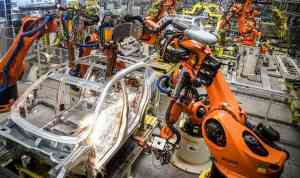
14.06.2019
European Trade Association is
Growing its Marketplace through the EU’s Green Initiatives
The European
Toner and Inkjet Remanufacturers’ Association (ETIRA), has represented the
interests of remanufacturers of (Original Equipment Manufacturers) OEM
cartridges and related service providers across the European Union (EU) since
2003. We work on topics like quality/standardization, legal and regulatory
advice, public relations, member contact platforms and more. Our code of
conduct, depicted by the ticked-R collective mark, gives our members a
competitive advantage in the industry.
To enhance
our outreach, ETIRA is also active in the CER, the Brussels-based European
remanufacturing council. ETIRA now has 40 members.
2018 was
another busy year for the European Toner and Inkjet Remanufacturers
Association (ETIRA). In summer, we thanked outgoing President Christian
Wernhart for 12 years at the helm of our association. Industry veteran David
Connett is now leading ETIRA on its path to growth.
Last year,
the EU made the circular economy a key policy initiative. This was music to our
ears, as cartridge remanufacturing is textbook circular economics. A February
2018 EU Commission report on cartridge reuse, which we had asked for, clearly
called for more EU action to promote remanufactured cartridges.
If you reuse
your cartridge as a cartridge for as many cycles as possible and thereafter
recycle its materials, you have the lowest environmental footprint possible.
Building on that study, ETIRA is now actively lobbying the EU to facilitate the
reuse of cartridges. We call for an EU ecolabel for remanufactured cartridges,
and for public procurement programmes to give preference to remanufactured
products.
We also
called for an end to OEM anti-remanufacturing practices such as the empoyment
of smart chips, unfriendly cartridge designs, patents on cartridge reuse,
market lockout sales structures, refusals to honor printer warranties and more.
For too long,
the OEMs have refused to further “green” the printing process. The only thing
they did was to reduce printer energy use, but we argued that doing so has
delivered little environmental benefit. If we really want to “clean up”
printing, you need to reuse the paper and the cartridges!
We also
insisted that the EU acts against the patent-infringing, non-OEM new-build
cartridges, or “clones” as we call them. These products from Asia have achieved a large market share, mainly because they are very cheap.
But this fast growth came with a cost: the quality of many products is
not so good. Also, many do not respect OEM patents, so if you buy them you too
can be sued by the OEM. ETIRA published a free “Guide to Clones,” which
educates our members on the risks they run when buying non-OEM new-built
cartridges.
Recently, we
identified another worri some issue with the clones. In late 2018, ETIRA and
others had a German laboratory test eight to nine clones purchased off the
internet, and it turned out that most of them contained levels of the flame
retardant DecaBDE above the allowed EU limit. DecaBDE has been banned in
the EU for many years, and may be used in materials of products like
electronics but up to only .1 percent. It was shocking to see that some
contained levels up to 14 to 17 times the allowed limit!
This problem
occurred not only under the small suppliers, but also the well-known large
Asian names apparently use too much of a chemical that is basically prohibited
in the EU for health and safety reasons!
This is why
we are telling the EU that now is the time for them to act. We are being
squeezed between the OEMs and the clones, as a result the European cartridge
remanufacturing industry is able to remanufacture only 10 to 20 percent of all
OEM cartridges put on the market. Yet, if all the aforementioned market
barriers were removed, that number could be 75 to 90 percent!
So at a time
when the EU wants more products to be reused, and citizens and companies are
trying to lower their carbon dioxide footprint and reduce their use of natural
resources, a remanufactured OEM cartridge should be the first choice of all
business and personal cartridge users in the European Union.
Under the 2018 circular economy initiative, the ETIRA message is coming
across. We are seeing growing interest in our work from authorities at the EU
and the national level. Our work will result in more opportunities for
cartridge remanufacturing, and a cleaner Europe.
Follow us on Facebook and Linkedin to stay tuned! For more information,
visit www.etira.org.
Details:https://www.rtmworld.com/features/european-trade-association-is-growing-its-marketplace-through-the-eus-green-initiatives/
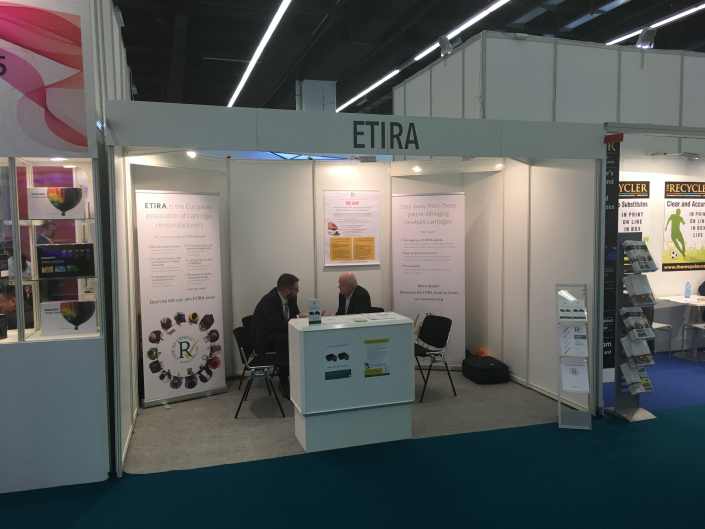
14.06.2019
INDEPENDENT
TESTS REVEAL: NEW-BUILD CARTRIDGES COMPARE FAVORABLY WITH OEM
Following
extensive, confidential testing by Buyers Lab (BLI) on two very popular laser
printer cartridge series, LD Products is boasting it’s Chinese-made, new-built
cartridges (NBCs) will be a winner with US dealers looking for high-yield,
non-infringing, quality cartridges targeted for use in MPS environments.
In
order to complete the testing objectively and from a true end user perspective,
BLI confidentially sourced NBC print cartridges from dealers during the first
quarter of 2019 and compared them with the genuine OEM cartridges. According to
BLI, the evaluation process took one month, with devices running at accelerated
volumes and using an industry standard target, to accurately compare the
cartridges on print quality, yield and overall value.
“Dealers
know and trust BLI’s extensive testing methodology and, to our knowledge, this
is the first time any new-build or extended yield cartridges have successfully
completed BLI’s testing,” says Matt Daniel, VP Product Development
at LD Products. “Now that we have these reports, we’re excited to refute the
misleading claims made by OEMs and remanufacturers with fact-based information
about how well our GOLD Line new-build cartridges perform in both reliability
and yield attainment,” he added.
According
to Christian Pepper, President of the LD Products Channel Partner Division, the
BLI results confirm what they already knew from their own internal lab testing
which followed an extensive product sourcing process in China. “We have
recently published a series of testimonials from leading dealers as to the results
they saw in their fleets, and now we have irrefutable data of how our
cartridges performed against OEM in a head to head test by the industry’s
leading 3rd party testing organization,” he stated.
“This
report further positions the LD Gold Line as a clear leader in the aftermarket
supplies industry and we are excited to share the results of BLI’s testing with
our customers.”
The two cartridges involved are the
9,000-page CF226X and the 40,000-page extended-yield toner cartridges (compared
with the 25,000-page original HP CF281X toner cartridge).
The BLI report included comments
such as, “LD Gold Line cartridges produced good overall quality. Solids from
the LD Gold Line toner were darker and richer than those produced by HP … All
LD Gold Line cartridges tested operated reliably, completing testing with no
malfunctions, and they surpassed their rated yields.”
Pepper
says the full results will be made available to dealers at the ITEX Expo in Las Vegas on April 24 and
25. In 2018, LD Products claims it achieved the industry’s lowest return rate
of 0.1%.
Details:http://www.rtmworld.com/2d/news/independent-tests-reveal-new-build-cartridges-compare-favorably-with-oem/
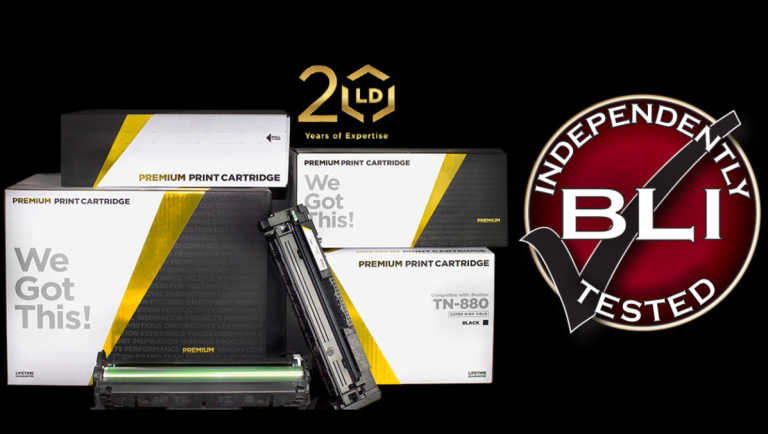
14.06.2019
HP DEFENDS ITS INK JET PATENTS
IN CHINA… AGAIN
Following a much-publicized case in
April 2016, HP is going back to the courts in China to once again defend its intellectual property (IP) rights against a cartridge
supplier based in Zhuhai, China. HP has used its Chinese
entity, China HP Co.,
Ltd. 中国惠普有限公司 (China HP) as the
plaintiff in the Shanghai IP Court (established in the last four years) against Zhuhai Sharing Color Printing
Consumables Co., Ltd. 珠海市韶运打印耗材有限公司 (Sharing Color).
China HP officially docketed two
complaints on March 20 and served Sharing Color on April 12, 2019. Two
complaints have been filed because there are two patents involved, being
ZL200680056896.9 and ZL200580011727.9 respectively. China HP has filed two
separate cases because each patent has to have its own case in China. HP’s patents
relate to “addressing and multiplexing circuitry on the inkjet printhead.”
China HP is accusing Sharing Color of infringing
the two patents with the distribution and sale of “clone”, or copycat, 803
integrated inkjet cartridges—HP’s current generation print cartridges with a
printhead. HP views this popularly used, latest hi-tech version of its print
cartridges as a “bread and butter,” mainline cartridge.
In RT Media’s view,
the allegedly infringing products have been, and continue to be, distributed
and sold primarily within the Chinese domestic market. Even though the
manufacturer of the cartridges has not been identified in the complaint, a
source close to HP has told RT Media they know who it is.
HP
is requesting RMB ¥ 1.5 million in each case for a total of ¥ RMB 3 million in
damages and also requesting an injunction against any further sales of what it
considers to be infringing products. The docket numbers are (2019) Hu 73 Zhi
Min Chu No. 174 and 175.
HP considers the ZL200580011727.9
patent to be particularly strong in China. This same HP patent was
involved in a complaint against Speed Infotech of Shanghai in 2015 in a highly
publicised case—being the very first case to be heard in the newly formed Shanghai IP Court. HP’s patents were validated.
But Hewlett-Packard Development Company, L.P. (惠普发展公司有限责任合伙企业) and Speed Infotech settled out of court.
At
the time, Speed Infotech was accused of distributing and selling infringing
integrated inkjet cartridges manufactured by MicroJet Technology Co. of Taiwan.
Microjet filed invalidity requests at the China Patent Office, and the Patent
Office ruled that the patents were valid. This ruling was then appealed
at the Beijing Intellectual
Property Court, which also ruled, in HP’s favour,
the patents were valid. It can be assumed HP believes it has a
particularly strong patent having withstood the most rigorous scrutiny in the
Chinese court system and found to be both valid and infringed.
Because of the good press back in
2015 and 2016, it would appear there have been no further cases of
infringement. Certainly, HP has not pursued any Chinese companies in China, until
now. Others had been found to be infringing within the Chinese domestic market
in the past, but all have either ceased that activity or gone out of business,
probably because of the publicity HP has generated with its success in China and
worldwide litigation.
Despite the many criticisms China has
received in the past over the protection of IP rights, HP’s recent experience
with the Chinese legal system would suggest otherwise. The establishment of
intellectual property courts in Beijing, Shanghai, and Guangzhouin 2015, to more efficiently adjudicate cases related to the infringement of
patents, copyrights, and other intellectual property, must be seen as a
priority for the Chinese government.
Details:http://www.rtmworld.com/2d/news/hp-defends-its-ink-jet-patents-in-china-again/






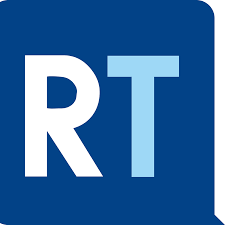





 In English
In English
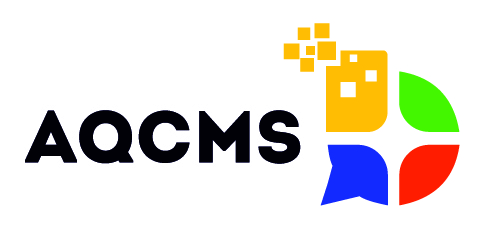


 In Russian
In Russian















